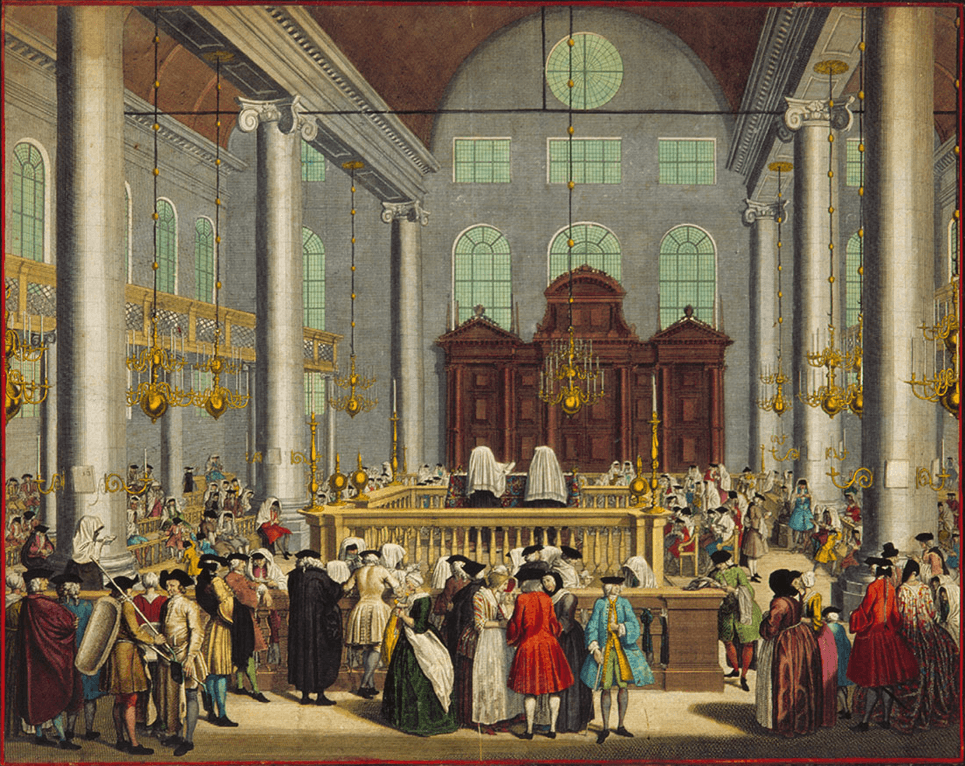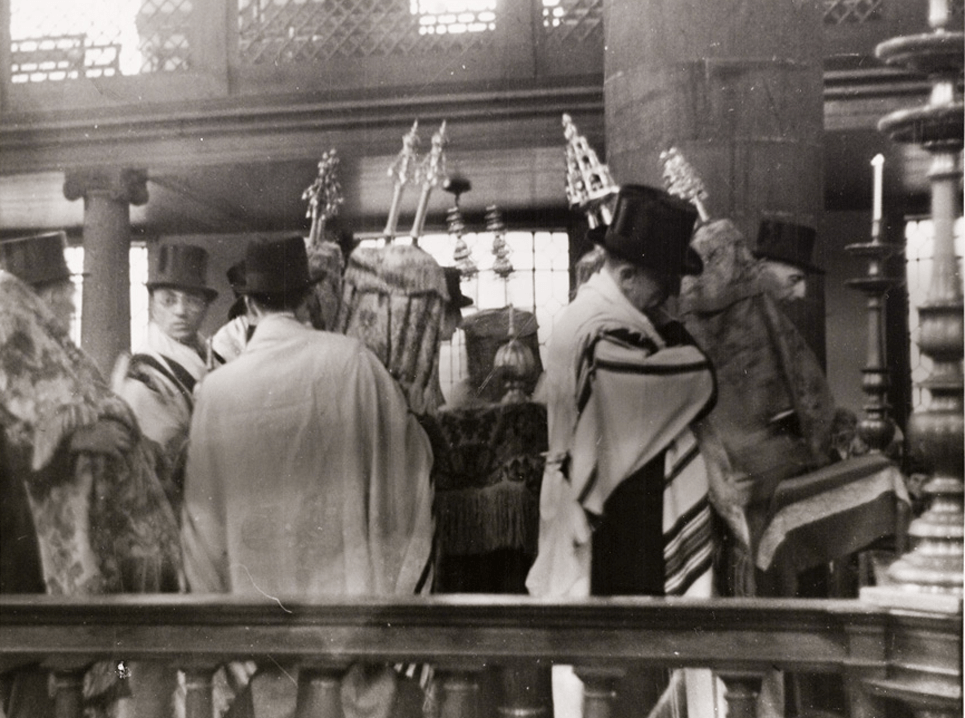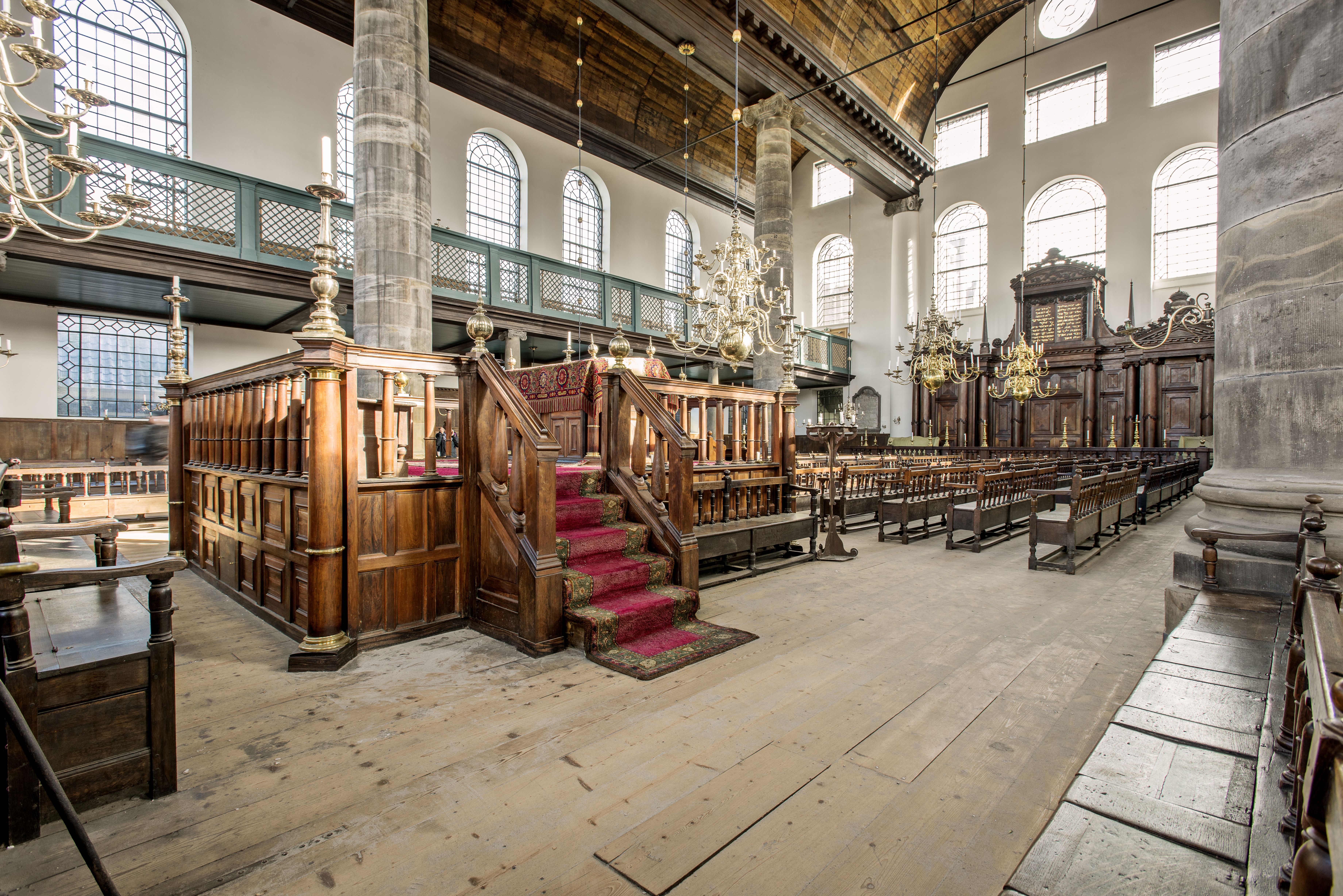Kahal Kados Talmud Tora, the Portuguese Jewish community, is the oldest Jewish community in the Netherlands. The community was established in 1639 by Spanish and Portuguese Jews who were forced to leave Antwerp after that city came under Spanish rule. They had previously fled Spain and Portugal to escape the Spanish Inquisition. These Sefardim found a safe haven in the tolerant city of Amsterdam.
In a short period of time three Sefardic communities were established: Bet Jacob in 1610, or 1602, Neve Salom between 1608 and 1612 and Bet Israel in 1618. The communities merged in 1639 into Talmud Tora, later known as the Portuguese Jewish community. At the time, the Netherlands were fighting to get out from under Spanish control, most likely the reason why the Sefardim dropped the ‘Spanish’ designation.
Many of the newcomers were descendants of Jews who were forcibly baptized. They were referred to as Marranos or conversos. The Sefardim used Portuguese for everyday conversation while Spanish was used for scientific publications, prose and poetry. Initially, the rabbi’s allowed the use of Portuguese in the service to ease the return of the conversos. When most members had learned Hebrew, the service was again held entirely in Hebrew. To this day announcements concerning profane matters are done in Portuguese.

Rabbis and Hazanim were initially brought in from Italy, and sometimes Thessaloniki and Morocco. Later on Amsterdam developed into a centre of learning and Jewish studies. Yesiba Ets Haim was founded, and soon acquired an extensive library. Ets Haim-Livraria Montezinos exists until this day and is one of the most prominent Jewish libraries in the world.
For centuries Amsterdam was the center of the West-Sefardic world, bringing forth many rabbis, scientists, philosophers, artists, merchants and bankers, who made an enormous contribution to the prosperity of the Netherlands from the Golden Age onward.
That prominence and wealth found its ultimate expression in the Esnoga, also referred to as Snoge, in the heart of the old Jewish neighborhood. To this day, the Esnoga is at the heart of our community. The Esnoga, together with the Old-New Synagogue in Prague, is the oldest functioning synagogue in the world.
Construction was started in 1671 at, what was at the time, the edge of the city. It was built in the classicist style which was popular amongst the city’s elite. The synagogue was designed by Elias Bouwman, who also built De Pinto House on the nearby Sint Antoniebreestraat.
The Portuguese community inspired the foundation of similar communities in New Amsterdam (now New York), London and Curacao. This can be seen clearly in the Mikvé Israel-Emanuel synagogue in Willemstad whose interior is almost an exact copy of that of the Esnoga.
Until the Second World War there were Portuguese communities in Den Haag, Naarden, Rotterdam and Middelburg.
The persecution of the Jews in that dark era dealt a heavy blow to the community. 3,700 of the 4,300 Portuguese Jews perished. Yet, on May 9, 1945, four days after the liberation of the Netherlands, services were resumed at the Esnoga, as can be clearly seen in a famous photograph taken by Boris Kowadlo. It shows the parnassim carrying a Torah scroll, almost as if nothing had happened. The Esnoga and its ceremonial object were untouched.
The survivors and their descendants worked hard to rebuild the community. Today, our number is growing, albeit slowly. About 250 families are affiliated with the community and there are about 630 members.
The community’s valuable possessions, the magnificent building, valuable ceremonial objects and the Ets Haim library, have been transferred to a separate foundation, called CEPIG, in 2003. This has made it easier to raise funds and attract subsidies for the restoration and maintenance of the synagogue and the community’s possessions. Since January 2009, CEPIG has been managed and operated by the Jewish Historical Museum, enabling the community to focus on its religious and social tasks.


